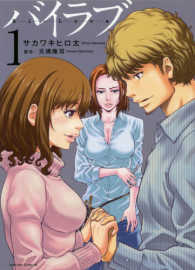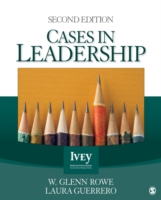- ホーム
- > 洋書
- > 英文書
- > Science / Mathematics
基本説明
Seeks to narrow the current gap between educational research and classroom practice in the teaching of physics. The approach makes a detailed analysis of research findings derived from experiments involving pupils, students and teachers.
Full Description
Everywhere in the world, except, for the time being, in some Asian countries, young people are losing interest in science. This disenchantment with science studies is particularly strong in the United States, but has affected Europe, and France especially. Official statistics confirm this, and I can add a telling example of my own. When I began teaching physics at Grenoble University in 1960, there were some 350 students studying to be electrical engineers. Today, 57 students are enrolled in the Physics Maitrise programme at the Joseph Fourier University in Grenoble, and 15 of them are foreign students. In that time interval, the total number of students enrolled in institutes of higher learning in mainland France rose from 309 700 (in 1960-1961) to 2 111 100 (in 2000-2001). If we look at what happened in the USA, to try to avoid making the same mistakes, there is indeed a strongly antiscientific trend in that society, of which the "Politically Correct Movement" is the most extreme manifestation. Yet this movement has profoundly influenced the humanities departments of American universities, and the persons responsible for training teachers. There is a risk that similar negative effects will show up in France, where many primary school teachers have a background in the humanities, and often have no scientific culture at all. c. P. Snow's famous pamphlet on the "two cultures" was published in 1959, but is still exceedingly topical and should be recommended reading in all teacher training institutes.
Contents
1 / Watersheds.- 1. How and What to Spotlight.- 2. How Much Should be Explained.- 3. Images: Are they always useful?.- 4. Experiments: Are they supposed to help?.- Appendix 1: Some General Intentions Are Very Similar in the Various Syllabuses.- Appendix 2: Why the Pinhole Camera is no Longer on the Syllabus.- 2 / Contact, friction and propulsion.- 1. Laws that Run Counter to Common Sense.- 2. A Method of Spotlighting the Basics.- 3. A Way of Spotlighting Friction: goals and difficulties.- 4. First Elements of Static Friction: step by step.- 5. Analysing the Sequence: lines of attention.- 6. Evaluation of the Sequence with Students.- 7. Reactions of Trainee Teachers.- 8. What Conclusion Should We Draw?.- Appendix 1: The Technique of Fragmented Diagrams.- Appendix 2: Two Situations for Studying Kinetic Friction.- Appendix 3: Trainee Teachers' Comments on the Sequence.- 3 / Pressure in Fluids in the Presence of Gravity.- 1. Questions About the Merits of a Microscopic Approach.- 2. The Macroscopic Level: what quantities "have to be"?.- 3. Fluid Statics: common ideas among students.- 4. A Proposal for the Teaching of Fluid Statics.- 5. Analysing the Sequence: lines of attention.- 6. Evaluation of the Sequence with Students.- 7. Teachers' Reactions.- 8. Conclusion.- Appendix: Main Results of the External Evaluation.- 4 / Superposition of Electric Fields.- 1. Interaction at a Distance and Superposition.- 2. Charges, Fields and Superposition: selected aspects.- 3. Superposition and Causality: common forms of reasoning.- 4. Elements of a Teaching Sequence.- 5. Analysing the Sequence: lines of attention.- 6. Evaluation of the Sequence.- 7. Conclusion.- Appendix 1: Contents Previously Taught to Students Questioned in the Preliminary Survey.- Appendix 2: Electrostatics andElectric Circuits Disconnected: the field in wires.- 5 / Superposition of Waves and Optical Imaging.- 1. Choosing a Model.- 2. Common Difficulties and "Spotlighting" of the Content.- 3. Analysing the Proposal: some elements.- 4. Reactions of In-Service or Trainee Teachers.- 5. Conclusion.- 6 / Colour Phenomena.- 1. A Topic at a Crossroads.- 2. Colour Phenomena and Light: the chosen approach.- 3. Common Ideas: too exclusive a linkage.- 4. A Proposed Sequence.- 5. More Detail, Following the Lines of Attention.- 6. Evaluation of the Sequence.- 7. Teachers' Reactions.- 8. Conclusion.- Appendix 1: Additive and Subtractive Mixing.- Appendix 2: Aspects of Knowledge Whose Acquisition is Evaluated One Year after the Sequence.- Conclusion.- Index of Names.








